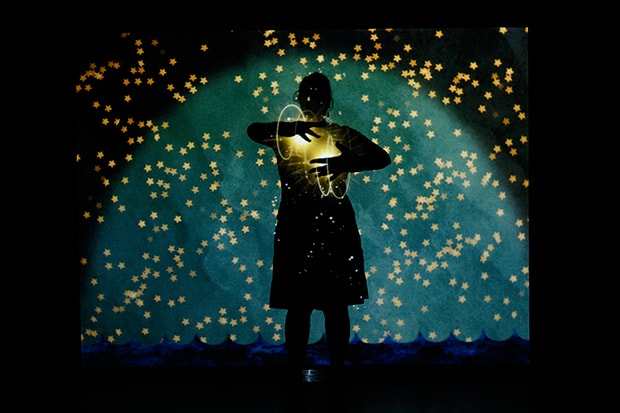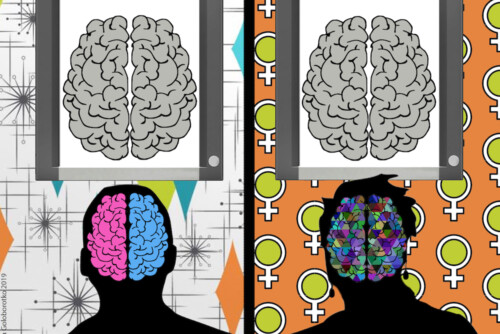Repetition and Difference?
At stake in the emergence of psychotic logic was the stability of older histories of objectivity, truth, and documentation. The Viennese psychoanalyst Victor Tausk, in the wake of the First World War in 1919 was among the foremost to identify this problem, comprehending schizophrenia’s dangerous relationship to paranoia when coupled with a desire for causality. “The schizophrenic influencing machine is a machine of mystical nature …” Tausk wrote, “a large number of patients complain of all these ailments without ascribing them to the influence of a machine. Many patients consider the cause of all these alien or hostile sensations of physical or psychic change [as] … emanating from enemies … the idea of the influencing machine originates in the need for causality that is inherent in man ….”1 His analysis correlates temporality, machinery, and violence. He noted that schizophrenia is a new machine both lively and “mystical,” related to other times and spaces in the human imaginary. But patients assume that this violence arrives from elsewhere, telecasted, from an external enemy. The fact that the world is self-produced, self-reflexive, and that the outside is emanating from within are impossible for the pathological patient to realize. This pathos emerges from the need for causality. It is a temporal problem, a desire for a history that can be explained, a teleological time where what happens is already accounted for. Tausk diagnosed a conflict between the subjective nature of perception and older fantasies of authority and knowledge.
But what are we to make of the midcentury revision of psychosis from a problem for knowledge and power to a technical instrument—into a game for policy, a therapy for groups? Schizophrenia can be productive, it is a “weakening,” in Bateson’s words, of the ego and an opening to the world, to the reception of signals. But the doppelganger to this condition is annihilation—repetition without difference—the result of being too closely married to one perceptual condition.
According to Bateson, schizophrenia takes on a pathological manifestation when the subject has no other, different, communicative situations to compare, contrast, or use, outside of the immediate message. Only diachronicity facilitates heterogeneity, rather then repetition, in potential actions within the rubric of communication theory and the double bind.
Such repetitions, however, are no longer defined as pathology, but as rationality within the postwar milieu. This analysis was not merely true of the Highland Balinese. Its greatest application, for Bateson, was to explain cultural conflicts in global systems.
In 1952 Bateson wrote to this effect in a letter to the cybernetician and MIT mathematician, Norbert Wiener. His words resonate with Tausk’s original observations that the search for causality turns the schizophrenic patient paranoid. What was once personal and psychological is now, however, framed as a matter of large systems and networked politics:
What applications of the theory of games do is to reinforce the players’ acceptance of the rules and competitive premises, and therefore make it more and more difficult for the players to conceive that there might be other ways of meeting and dealing with each other …. Now, it is necessary for Von Neumann to give birth to the “static” (and, therefore, ad hoc) theory before any theory of flux could be attempted—but I question the wisdom of the static theory as a basis for action in a human world. The theory may be “static” within itself, but its use propagates changes, and I suspect that the long term changes so propagated are in a paranoidal direction and odious.2
Bateson understood “static” games as producing conditions for action—but not for different possible actions, only repetitive cycles culminating in potentially genocidal violence (nuclear war in this case), or in his language a “paranoidal direction.”
Bateson was not against game theory. He did not yearn for a return to some fantasy of older scientific virtues of observation or positivist empiricism. In fact, Bateson went so far as to propose that these algorithmic theories analyzing patterns of behavior in terms of communication and rules were “necessary” to produce new theories.
But there appeared to be a threshold when what had begun as a model permitting self-reflexivity and innovation became a stuck mechanical automaton incapable of recognizing its own behaviors. The model, reading its own predictions as the actions of an external force, takes the paranoid direction of attempting to expunge this imagined intruder.
Bateson linked this turn, from creative to violent schizophrenia, to time. “No doubt in short time perspective the Rand people are right and have “useful” advice to offer on such subjects as intercepting hostile aircraft or bamboozling hostile diplomats …. In the long run, the application of the theory of games can only propagate the theory by reinforcing the hostility of the diplomats, and in general forcing people to regard themselves and each other as Von Neumannian robots.”3
Violent cathexis, in cybernetics as in psychoanalysis, was linked to a circuit that could not break; a message that continues to circulate without repression, resistance, or reorganization. For Bateson, recalling communication theory, one can only communicate in one’s own time, and therefore the ability to bridge different times is also the ability to bridge multiple communication scenarios. And it is only the ability to attain another level or set of communication that can break the repetition of the same message and the descent into violence.
Bateson opened a talk delivered in the 1950s at the New School for Social Research, on “Bali and the Value of the Steady State,” dealing with human survival to this effect; the talk was an assault on game theories. His argument was that they assumed the teleological, linear, and repeatable nature of a situation. Games cannot learn, they are processes that unfold, but the process itself has no relationship to time, history, evolution—their rules always/already know the future, and therefore, they eliminate it. He was thinking of nuclear war. These are repetitive processes without time, but ironically always framed in terms of prediction and change.4
The horror of such computational approaches, therefore, is not at the locus of representation, but rather in their automation of the process of relationality—their standardization of communication, and technologization of change itself as a process to be modeled, replicated, repeated. Such systems take the collapse between materiality and representation—the vitality of their process—literally, making the world and the game the same, always reacting, but never changing. This is the destruction of temporality in its own name. This horror however is obscured when return is linked to causality, that return, if we will, to objectivity in Mead’s voiceover, or authority in the RAND corporation’s policy, that cannot be recognized as such because we are within the system. We are too close to what we study. Proximity is always a possibility for queer relationships and a terminal threat to perspective and subjectivity. Bateson’s analysis implies that proximity physically may be desirable, but distance temporally is necessary for emergence.
Conclusion: Time, Differentiation, and Change in Cybernetic Loops
As a final consideration, perhaps we should reconsider the introductory scene. At the locus where older histories of colonial anthropology, medical treatments, and wartime propaganda were assimilated into the infrastructure for a new model of mind, animal, and machine, we can find the contours of an entirely new form of method and administration.
In the tortured tricks of the porpoise perhaps we begin to understand what difference might denote in cybernetics. The ability to avoid the descent into pathological situations is contingent on the ability to operate at a disjuncture from the synchronous moment of the command-response scenario. One must possess an archive of temporal relations to produce multiplicity. Bateson urged proximity in space between bodies, methods, and technologies, but a disjuncture or temporal distance from the scenario. The ability for an older neurosis to disrupt the seamless feedback loops is the only site of innovation now extrapolated to the systemic level. Only this recombinant property opens to repetition with difference. But Bateson’s porpoise also reminds us that that capacity is always inside our systems, that communication systems—whether animal, machine, or human—are always multiplex; the question is how to activate that de-jamming mode?
Bateson, therefore, understood schizophrenia as equivalent to play, but only if channeled into other modalities of being and not repetitively, and automatically, reenacted—without return. In Bali, he thought, he may have discovered one possible example of this alternative manifestation.5 But this “discovery” only emerges in his writings in the 1950s and 1960s as Bateson changes his negative attitude to the Balinese and fetishistically marvels at their avoidance of a violence that appears to occur all-too-often in the other exemplars of this condition.
This discovery of psychosis as emergent, a discovery that continues to reverberate in the present through our own methodologies in the social sciences and humanities, comes with a final adage. When he had originally been in Bali, Bateson had been unable to see this feature. He called the Balinese boring, plateaued, stuck, uncreative. He thought they were nonviolent, never recognizing the postcolonial civil war about to break out that would claim millions of lives, and that has not yet been resolved. We are left here with our own feedback loop, of what it means to feed back without return. This colonial situation made possible other forms of encounter, but could never be retrieved, like that lost objet petit a of Lacan—what do we make of this? Or perhaps, more likely, the “lack” Mead first described in the Balinese inability to express confrontation, causality, and culmination as in Western cultures: This absence rather then dialectical difference made cultures and psyches part of one circuit, a new medium for global communication. The historically specific transformation in relations between minds, bodies, and media is a source of violence, love, danger, and possibility—all operating at once inside our communication theories.
We might, then, contemplate the divide between self-reference and self-reflexivity implicit in the theory of the double bind. It is a fine line between producing a world that is only about the self and inducing the insular fanaticism of the paranoid, and making a world open to subjectivity, where the self becomes conscious of being decentered, peripheral, and dependent upon other entities for subjectivity and knowledge. It is also a fine line between telling history and returning to it. What does it mean to recognize the postcolonial history within our psychiatry, psychology, and computer culture? One must wonder: what desires and ghosts still haunt our machines and organizations? What forms of circuitry, or history, can disrupt the seamless flows of self-referential and personalized data in our present? The capacity to latently recognize that the subject is lagging from the present, but the residual result of an ecology of interacting with others is difficult. But it seemed possible in the cybernetic performances of control failure, evoked so powerfully for Bateson in animals.
Bateson erased a history of colonialism, empire, and even revolution in Indonesia to produce a seamless account of mind, while simultaneously offering the equipment to inspire others—most notably for contemporary readers, Gilles Deleuze and Félix Guattari—to rethink the ego and the subject in new formations. In replaying these many scenes, perhaps, we recognize what it is to both recover history, but not return to it.6
In 1969 Bateson could still use schizophrenia as a discourse to engage systemic errors and elucidate control failures through the performance of experiments and the production of poetic lectures that prompted the fascination, revulsion, and interest of his psychiatric audience. Schizophrenia as a model could still reinvent difference and create new forms of violence.
Today in our discussions of terror, economy, or war, there is endless mention of paranoia, insanity, networks, psychosis, and ecology, but whether deployed as descriptions of a condition or critiques of a logic of governance, these discourses no longer appear to figure as machines for learning or change; they no longer make the uncanny nature of control visible. The paranoia and psychosis of our systems appears to return to us in the present as symptoms, rather then as diagnostic methods, as for Bateson.
Perhaps that is the success and failure of these histories: The automation of schizophrenia as a perceptual condition to the point of making it only a technology, whether in medicine or computing. It is perhaps not a side note that the next diagnostic and statistical manual for psychiatry, the DSM-V, no longer has a classification for the paranoid forms of schizophrenia at all. This omission demonstrates a historical fact—we no longer appear to take pleasure, or suffer, at witnessing the dangerous cycles and marvelous interactions made possible by our nervous networks.
- Victor Tausk, “On the Origin of the ‘Influencing Machine’ in Schizophrenia,” Incorporations, eds. Jonathan Crary and Sanford Kwinter (New York: Zone, 1992 [1919]): 542-69. [↩]
- Gregory Bateson, Letter to Norbert Wiener, September 22, 1952 (Norbert Wiener Papers, Massachusetts Institute of Technology, MC22, Box Number: 10, Folder 155). [↩]
- Bateson 1952. [↩]
- Bateson 2000 [1972]: 107-27. [↩]
- Mead thought otherwise, she argued that the Balinese lacked progress or creativity—unable to have conflict, she said, they were unable to have time or change. [↩]
- Gilles Deleuze and Félix Guattari, A Thousand Plateaus: Capitalism and Schizophrenia (London: Athlone Press, 1988); Gilles Deleuze and Eugene W. Holland, Deleuze and Guattari’s Anti-Oedipus: Introduction to Schizoanalysis (London: Routledge, 2001); Eugene Holland, “Deterritorializing ‘Deterritorialization:’ From the ‘Anti-Oedipus’ to ‘a Thousand Plateaus,’” SubStance 20. 3 66 (1991): 55-65. [↩]






